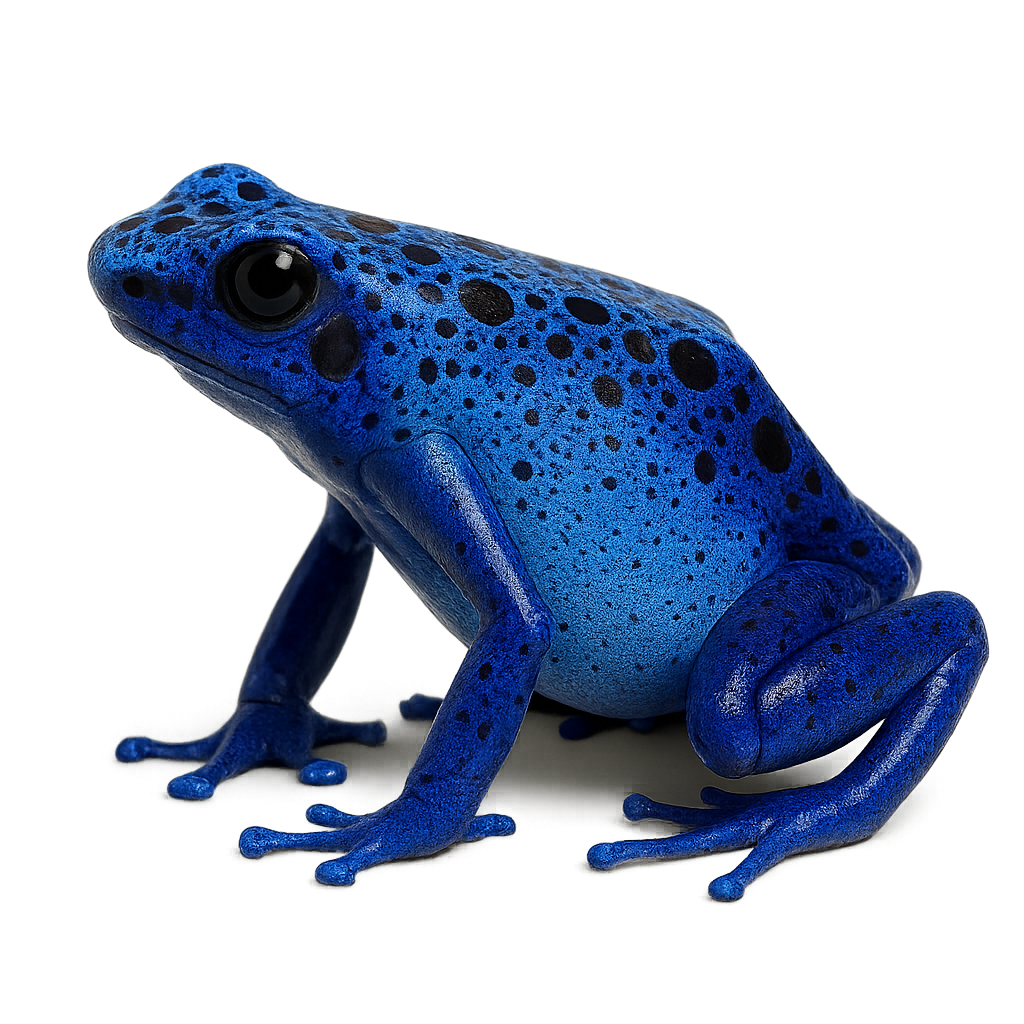Observe and photograph a species in its natural habitat
Learn where and when to observe a species in the wild, how to recognize it in the field, and what habitats it lives in. Get photography tips adapted to its behavior and capture stunning images without disturbing the animal. For full details, open the complete profile in the WildlifePhotographer app.
Poison dart frog
Scientific name: Dendrobatidae

IUCN Status: Least Concern
Family: DENDROBATIDAE
Group: Amphibians
Shyness: Shy
Safe distance: 2 m
Breeding season / Courtship: 01.03-31.07
Gestation: N/A
Births: 01.06-31.08
Habitat:
Humid tropical forests, near streams and shaded areas, mainly in Central and South America
Description:
The Dendrobate, belonging to the Dendrobatidae family, is a small frog known for its bright colors and toxic behavior. These frogs typically measure between 2 and 6 centimeters in length and are easily recognizable by their shiny, colorful skin, which can be yellow, blue, red, or green, depending on the species. They are primarily found in the humid tropical forests of Central and South America. Their diet consists of insects, small arthropods, and occasionally small worms. Dendrobates are known for their toxic secretions, which serve as defense against predators. These toxins mainly come from their diet, particularly ants and beetles that contain alkaloids. Dendrobates are also both terrestrial and aquatic creatures, typically laying their eggs in humid places, where their tadpoles develop in small pools of water or decaying leaves. Although fascinating, Dendrobates are vulnerable to habitat loss due to deforestation and pollution.
Recommended lens:
>=100 mm
Photography tips:
To photograph poison dart frogs, a macro lens is ideal for capturing the vivid colors and textured, moist skin of these tiny amphibians. Take photos when they are moving or resting on leaves, stones, or moss-covered logs. Avoid disturbing them by getting too close—keep your distance and move slowly. Use soft or natural light to avoid harsh shadows and preserve the tropical feel of their habitat.
Ready to take action?
Choose your platform and start your free trial today



